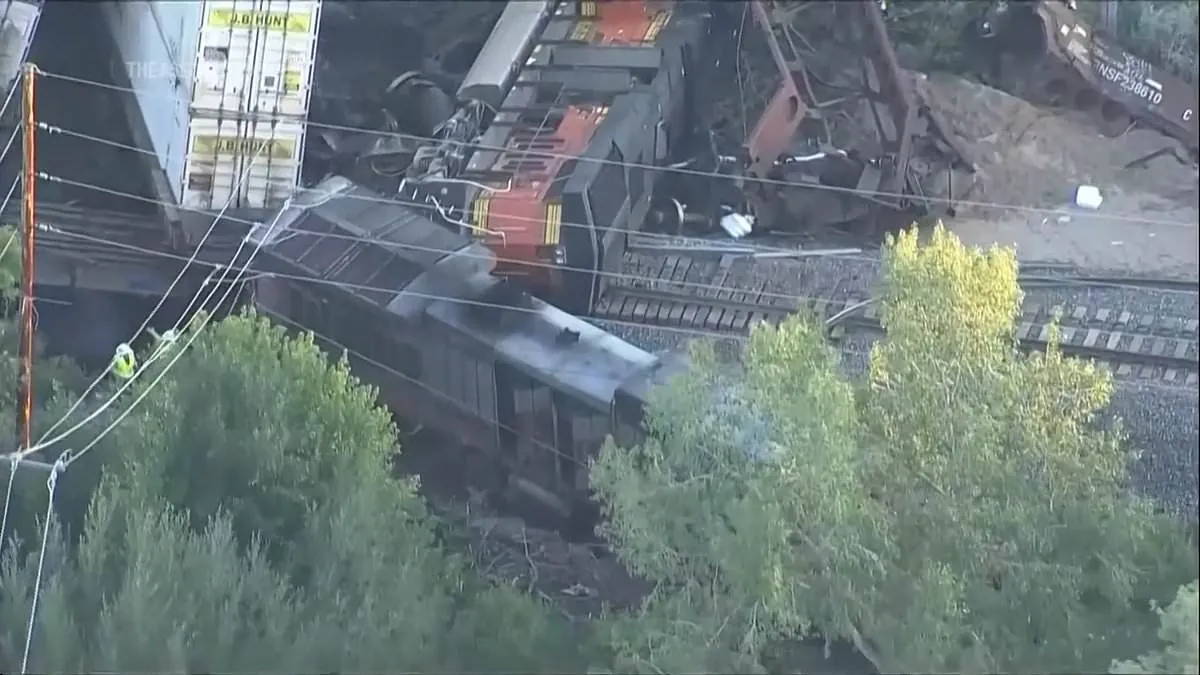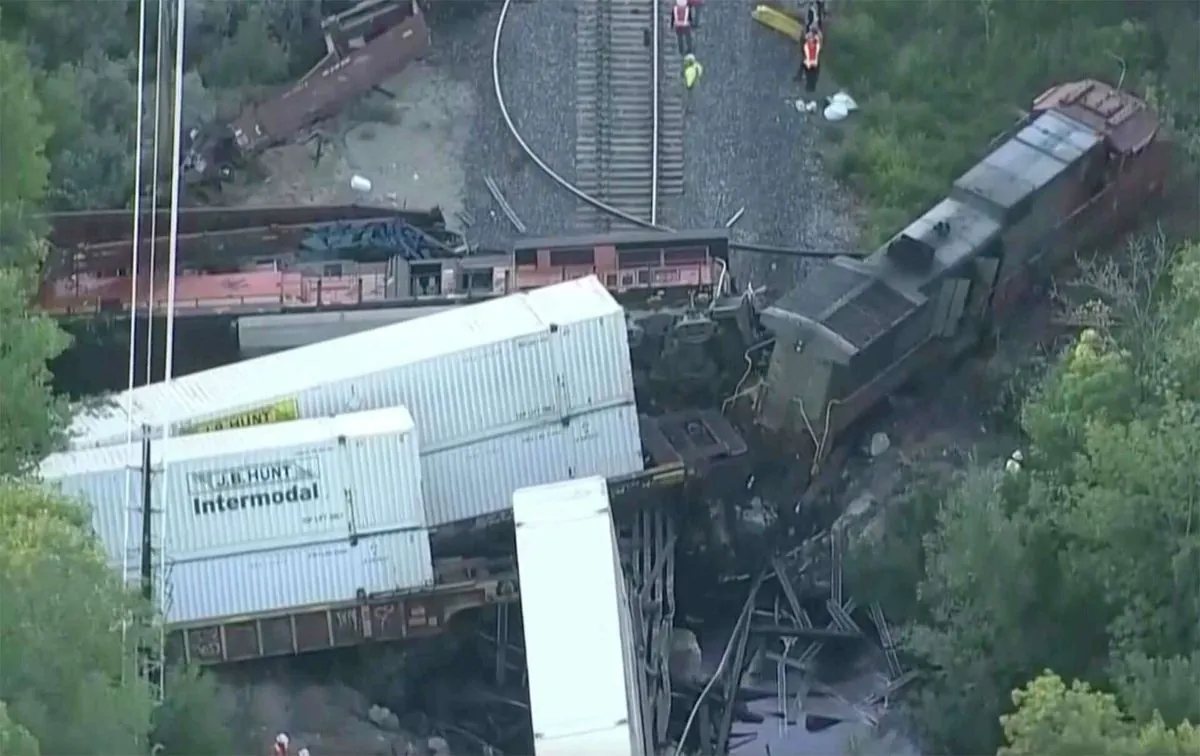Freight Train Collision in Boulder Causes Damage and Minor Injuries
Two freight trains collided in Boulder, Colorado, causing bridge damage and minor injuries to crew members. The incident led to temporary road closures and a small fuel spill, with cleanup efforts underway.

In a significant incident that occurred on August 22, 2024, two freight trains operated by BNSF Railway collided in Boulder, Colorado. The collision, which took place around 11:15 p.m. near Boulder Creek, resulted in damage to infrastructure and minor injuries to crew members.
The Boulder Police Department reported that the crash happened north of Boulder Community Hospital, an institution with over a century of history in the area. The collision led to the temporary closure of several roads, which were reopened by the morning of August 23, 2024.
BNSF Railway, one of North America's largest freight railroad networks operating approximately 32,500 miles of track across 28 states, is currently investigating the cause of the collision. The company's spokesperson, Kendall Sloan, confirmed that two crew members were taken to the hospital with minor injuries and have since been released.
The aftermath of the collision was substantial:
- A rail bridge was destroyed
- Two train locomotives sustained severe damage
- Several cargo cars derailed
- A small amount of fuel was spilled
- Power outages affected about a dozen customers
Initially, there were concerns about fuel leaking into Boulder Creek, a 31.4-mile-long stream flowing through Boulder Canyon. However, authorities later clarified that the fuel was absorbed by sand that had spilled from one of the train cars, mitigating potential environmental impacts.

The cleanup operation is expected to be challenging due to the train's length, which is approximately one mile. This is not uncommon, as modern freight trains can extend up to three miles in length. The incident highlights the complexity of railroad operations and the potential risks associated with them.
Boulder, situated at the foothills of the Rocky Mountains and home to the University of Colorado Boulder, has a rich railroad history. The city, like much of Colorado, played a crucial role in the development of railroads during the 19th century. This recent collision serves as a reminder of the ongoing importance of rail safety and the need for robust emergency response protocols.
As the investigation continues, it's likely that agencies such as the Federal Railroad Administration (FRA) and the National Transportation Safety Board (NTSB) will be involved in determining the cause of the collision and recommending safety improvements. These organizations play crucial roles in overseeing rail safety and investigating major train accidents in the United States.
The use of social media platform X (formerly Twitter) by the Boulder Police Department to communicate updates about the incident reflects the growing trend of utilizing digital platforms for emergency communications. This approach allows for rapid dissemination of information to the public during critical events.
As cleanup efforts continue, local authorities assure that there is no ongoing threat to public safety. The incident serves as a reminder of the complex infrastructure that supports modern transportation and the challenges involved in maintaining its safety and efficiency.


































